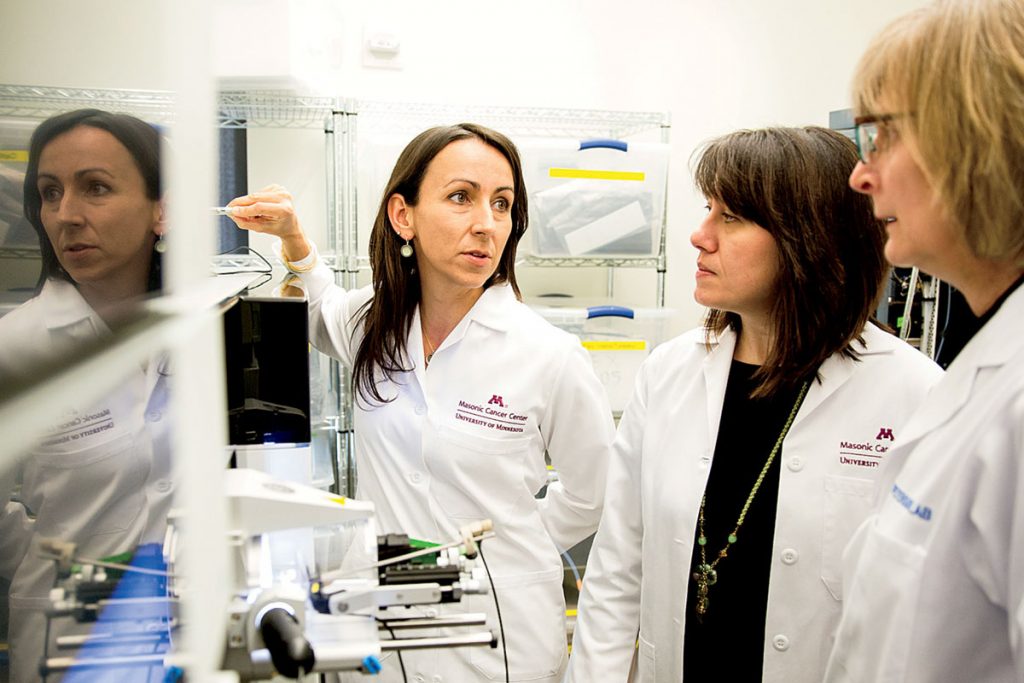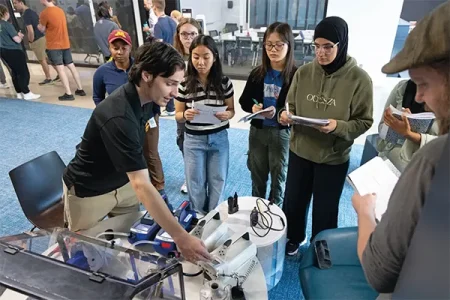
Chemicals or environmental exposures can damage DNA, and that damaged DNA can result in cells that become cancerous. What we don’t know is exactly how that process unfolds — and discovering those steps is a Holy Grail of cancer research.
“We have exposure to a harmful agent and we have the outcome — the cancer is formed,” says Silvia Balbo, assistant professor and Masonic Cancer Center member. “In many cases, we know there is an association between the two, but we don’t have a clear understanding of the process or the steps that take place, therefore we don’t have a clear idea of where we can intervene to stop that sequence of events from happening.”
But Balbo has developed a new way to use mass spectrometry, a technique that can identify chemicals, to move that search forward.
In the past year, she used her mass spectrometry method to explore what happens to DNA after exposure to colibactin, a toxin produced by a strain of E. coli bacteria and linked to the development of colon cancer. Her team found and identified a specific DNA modification in cells and animals exposed to the toxin. Little is known about colibactin’s biological and chemical make-up, but Balbo has now identified its DNA-damaging signature.
“This is the first time we’ve used this method to identify exactly how a toxin with an unknown chemical structure is interacting with and modifying DNA,” says Balbo. “The next step is to see if we can use this technique to detect the same DNA structural damage in humans and employ it as a diagnostic tool to see if people have been exposed to colibactin or are at increased risk for its harmful effects.”
The method has broad application for researchers who study the effects of many other toxins in the body. For example, Balbo is now conducting new research to determine exactly how consuming alcohol damages DNA and triggers the development of cancer.
The Model
Using high resolution mass spectrometry, Balbo can isolate DNA and reduce it to the compounds containing the four bases that make up the double helix, then determine which base has been chemically and structurally modified. With this method, she can ascertain what chemical has reached the DNA and caused the damage, then step backward from there to determine how the exposure originated, or how the damaging effect on DNA may be prevented from happening in the first place.
The Impact
This mass spectrometry approach could lead researchers to uncover the genetic chemistry leading to cancer development and Balbo is partnering with scientists across the country in this goal. The method could help discover, for example, what environmental exposures cause very specific head and neck cancers in children who are affected by Fanconi anemia, a project Balbo is currently exploring. There’s even the possibility that the method could improve chemotherapies by testing a microdose of a chemotherapy drug to see how it interacts with an individual’s DNA and then devise a more personalized treatment.


